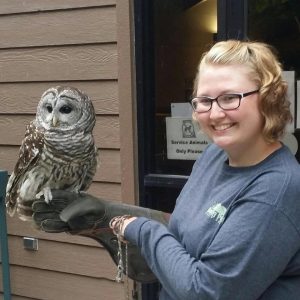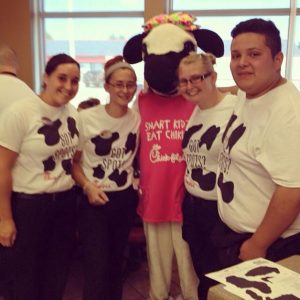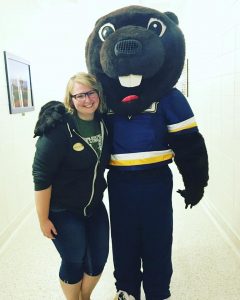According to Jane Camarillo, director of the Office of Residential Education at Stanford, roommates fall into three categories.
“If you had to break down roommate pairings, they might fall into three categories: the best friends, the peaceful coexisters, and the soon-to-be-divorced.”
Something you need to know about roommates and the college experience. The roommate you live with will affect the course of your social life, it will improve your people skills, and it will help you make friends. College is a time that students find themselves suddenly living with someone not of their choosing or knowing.
It surely ranks among life’s most vulnerable moments.
According to Sheri Hineman, Assistant Director of Residence Life of Morningside College, no one says students should live on campus for a “college experience” but rather living on campus is a way to transition from living with parents to living on your own.
“Morningside College is a residential college. As such we value the importance of students having the experience of living with others who are in a similar situation and have similar goals. The residence halls are a great way to transition from living in a home with family to being on your own and supporting yourself.”
Living on campus is not the college experience, but having roommates is. It starts as a terrifying experience, but in the end, that person could become your best friend. Alternatively, they just end up being the person you share a room with.
“Roommates are a significant part of the college experience. Learning to live with someone who is not a relative and who has differing views than you is a growing experience. Also, you have the chance to meet someone who will be a friend for life.” Sheri informs.
Experience the roommate life is no exception for current Morningside College seniors Brayton Hagge and Kaylin Petersen. The two, once complete strangers, met their freshman year at Morningside because of the random roommate assignment.
At Stanford University, they do not accept roommate requests. They also do not tell students who their roommate will be until they arrive on campus.
“Your freshman roommate is (a) not someone you choose; (b) quite possibly your polar opposite; and (c) hard to get rid of. And yet, sometimes it works out perfectly.”
Sheri believes that this tactic gives all incoming students a chance not to judge their roommate until they meet.
“In my opinion, this equalizes all students and forces their first meeting to be face-to-face, so the student will not be judged on social media or preconceived notions about ethnic, social, political, occupational, athletic, or other group membership that can be found out before someone actually meets someone.”
Although not knowing whom your roommate is before you meet them, does stop preconceived notions, there is no statistic saying it is better than choosing roommates. Here at Morningside students are given an option on your roommates, you can sign up with one, you can sign up for a random one, or you can pay extra for a single room.
Brayton Hagge from Crofton, Nebraska was the only student from her graduating class going to Morningside. Without knowing anyone else going to her future school, she had no choice but to fill out the housing survey to have a random roommate.
“From her pictures, I knew she was a cheerleader, but that is it.” Brayton shrugs.
Kaylin Petersen from Lake Park, Iowa did know other students at Morningside. At the time, she was a cheerleader on campus and had an old friend from her high school here.
As much as she loved her cheer team and her friend, she chose to have a random roommate because it would make her socialize more and expand her friend group.
“The freshman experience is about getting the chance to know more people and it gave me an opportunity to expand my friend base.” Kaylin laughs. “Awkward then, and still awkward now, but with more confidence about it.”
Random roommate assignment is what Brayton and Kaylin got. They came to Morningside knowing that they were going to be roommates but had no idea what the other person was going to be like besides the photos and information their on their Facebook page.
Initially, Brayton added Kaylin and Kaylin accepted and then they Facebook investigated each other. The only conversation the two had was who is bringing what for the room. They did not talk to get to know each other until they met freshman move-in day.
Although Morningside calls them “random roommates” the roommate selection process is far from random. Students at Morningside get to have a say in what they want in a roommate and where they want to be placed.
“Although we frequently refer to the roommate selection process as random it is defiantly not random at Morningside. Random would be pulling 2 names out of a hat and then a room number out of a hat and putting them together. Students make a number of requests when being paired with a roommate. Athletes often request another athlete, either from the same sport or any sport not their own. Students in the arts often request another student in the arts. A nursing major may request another science major.” Sheri says.
Although Morningside lets you know who your roommate is ahead of time. Morningside and Stanford University works to ensure some roommate compatibility. Even without the majors and co-curricular activities students are paired up based on a series of student responses about their habits, such as, when and how they listen to music, study, sleep and choose to socialize. As with any imprecise science, the results are unpredictable.
Eventually, freshman moving day came, and Kaylin was there before Brayton. “When she first entered the room, she greeted me and immediately I thought, she’s friendly and is going to be more outgoing than me,” Kaylin chuckles with a shake of her head. “And then the first thing we talked about is how messy we are.”
According to Sheri, the ideal roommate situation is where you can live in the same room together, but outside of the room, each roommate has their separate friend group.
“I think the most ideal roommate situation is one where you can coexist and talk to your roommate and have good friends outside of the room. This allows a student to express frustration with a roommate to their friends or express frustration with a friend to their roommate.”
Brayton and Kaylin had an ideal living situation.
Kaylin, without knowing the ideal situation, says what made it work best for them was that they were not spending every minute of the day together. The two had their friend groups that they hung out with during the day, but in the evening, in the room they shared, they became friends.
It did not mean that Brayton and Kaylin avoided each other outside of the residence hall. It was just nice for the two of them to get away from each other by having other friends, but still having a friend at home. There isn’t a rhyme or a rhythm; the students have to figure it for themselves.
Flash forward to three years later. Brayton and Kaylin now live off campus, in a duplex, and are still roommates.
According to Camarillo, more upperclass students complain about their roommates then freshman.
“She reports that far more upperclass students than freshmen complain of irreconcilable roommate differences. That sounds counterintuitive, given that most upperclassmen get to choose their roommates whereas freshmen do not. But friendship does not always equal roommate compatibility, and some best-friend pairs may go into their new living arrangement with emotionally charged expectations.”
Kari* who started as a sophomore when she came to Morningside had a roommate picked out. She went to high school with her first roommate, and they were not best friends, but they knew each other and got along. Before the end of their first year living together, they were fighting consistently every night, and by the end of the year, they did not even talk.
The bright side to bad roommate experiences is that it gives the student a chance to go out, meet new people, and find close friends that way.
“Your roommate doesn’t have to be your best friend,” Camarillo from Stanford insists.
The next year, Kari moved in with a friend she made in college and they fought. It worked well enough for them to move into the same room for Kari’s final year at Morningside. Where her last year, she and the roommate had a blow out of yelling and slamming doors at each other. They still keep in minor touch today.
There is no way to say yes or no to being friends with your roommate or staying roommates strictly because there are a lot of factors that go into the decision.
“Every situation is so unique; it is hard to say a yes or no,” Sheri says. “What is the problem with your roommate? Is the problem really you (you’re unhappy, so that shows in your relationships)? How good of friends are you? What do you expect from the roommate situation?” Sheri adds.
Whether it was the different personalities or maybe Kari can’t have roommates. Things just don’t always go according to plan. It is like learning how to live with your roommates like Brayton and Kaylin. You just have to keep testing out the waters to see if you can live with someone else.
Bad roommates can’t really be avoided because no one really knows if they are going to work together or not until they give it a shot.
“I would argue that there are not bad roommates but bad matches. Similar to the philosophy that “there is someone for everyone,” I believe that there is a roommate for everyone.” Sheri informs.
Kari is now in graduate school and living off campus in a house by herself, and she says although it gets lonely, it is nice having a place you call her own.
If you should learn anything about having roommates in college it’s that it’s a learning experience and maybe your first roommate doesn’t work out and you don’t feel like you’re getting a college experience because of it, you are.
“The three things that come to mind as most important about living on campus college experience are making friends, improving people skills, and the convenience of living on campus.” Sheri shares.
Roommates are a part of college culture and whether you get along with your roommate or not. You end up learning some things about yourself such as how to live with other people, if you can live with other people, or if you are better off alone. Even then, don’t give up unless you know living with people is not for you.
*In my previous post, you know this story is about Kari. Meaning even if I changed her name, you’d still know it is about her. She just wishes for her last name not to be mentioned.
Sources:
http://alumni.stanford.edu/get/page/magazine/article/?article_id=36696
Sheri Hineman, Assistant Director of Residence Life of Morningside College
Brayton Hagge
Kaylin Petersen
Kari


 it fit in with my other friends really well, and it has continued to be that way,” Chase says.
it fit in with my other friends really well, and it has continued to be that way,” Chase says. Katelyn is President of the Buena Vista University Student Senate (BVUSS). The position, as she describes as working side by side with faculty senate, being a part of the board of trustees of the university and working with the committees in there, chair as President of the entire Student Senate, also to be the voice and face of the BVU student body, present at events.
Katelyn is President of the Buena Vista University Student Senate (BVUSS). The position, as she describes as working side by side with faculty senate, being a part of the board of trustees of the university and working with the committees in there, chair as President of the entire Student Senate, also to be the voice and face of the BVU student body, present at events. She is there mainly for a source of income. Katelyn has learned several leadership skills and has applied them to her life. While working at Chick-Fil-A, she has learned how to build relationships on a professional scale, how to handle conflicts, how to talk to people that might have problems with you, and how to work with a team of people of different personalities. These lessons have helped in her professional development and personal growth.
She is there mainly for a source of income. Katelyn has learned several leadership skills and has applied them to her life. While working at Chick-Fil-A, she has learned how to build relationships on a professional scale, how to handle conflicts, how to talk to people that might have problems with you, and how to work with a team of people of different personalities. These lessons have helped in her professional development and personal growth. going on in everyone’s life, how can I make their lives better and not have them go through things that I had to go through, how can I help them get out of those situations. Just things like that. How can I just be a better person? Those are some things that keep me up.”
going on in everyone’s life, how can I make their lives better and not have them go through things that I had to go through, how can I help them get out of those situations. Just things like that. How can I just be a better person? Those are some things that keep me up.”